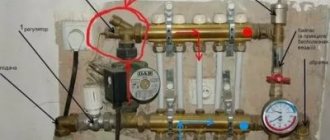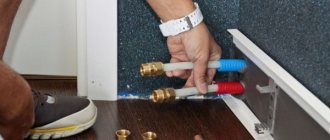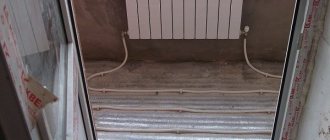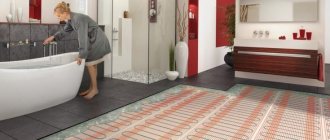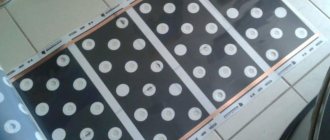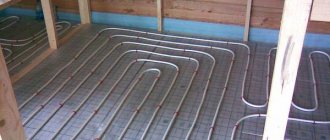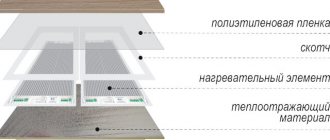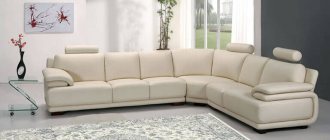In apartments and private houses, designers often use zoning. The living room and kitchen combine well. Two rooms connected to each other look spacious, and this layout will make the space cozy.
You can update the design, implement interesting ideas, or repeat a design seen in a magazine, TV show, or photo on the Internet. The style in the living room-kitchen can be different, and choosing it can turn into a fun experience.
Before combining rooms, designers advise taking into account the basic rules, creating a project, and choosing colors.
Zoning
Designers do not advise giving in to fashion trends and copying design ideas without taking into account dimensions, location and other nuances. Before planning and arranging furniture, every detail is thought through.
There are several simple rules that experts advise you to follow:
- Let the room have natural light. To do this, remove excess walls (except for load-bearing ones).
- If the rooms in the apartment are small (12 sq. m or 16 sq. m), the layout of the kitchen combined with the dining room will be the right solution.
- If the ventilation system is not designed correctly, the smell of food will spread throughout the apartment.
Advantages and disadvantages
Water-heated floors use energy efficiently. Heated floors increase comfort and ensure uniform heat distribution. Location under the floor covering is a safe option, since the likelihood of damage to the system becomes low, and the residents themselves will be protected from injuries and burns. Hidden heating is combined with facing materials easier than other options. The device is covered with tiles, laminate or linoleum. Before finishing, the chemical composition of the materials is checked. Connecting a water floor is possible both to the main heating system and to a separate one. Heated floors also have several disadvantages. Pressure drops occur in central heating. The installation itself takes a lot of time due to the multi-layer installation. To eliminate leaks, you will have to open the coating and damage its appearance.
A water floor is not able to maintain the desired temperature throughout the entire room!
Partitions
The interior of the kitchen and living room begins to be thought out from the junction of the two zones.
- Here are some of the ways and objects that delimit space:
- installation of a bar counter;
- kitchen island;
- big table;
- installation of a low partition.
Designers advise installing a wide counter, since you can sit at it like at a regular table, and high chairs are quite suitable for the whole family.
However, in small rooms (16 sq m), narrow counters are installed. Kitchen islands are convenient to use, but are only suitable for large kitchen-dining rooms (25 sq m or 30 sq m). Capital low partitions are installed only if it has been decided in advance what they will be used for (for example, as a TV stand).
Photo of electric heated floors
- External tiling work - features and unusual solutions
DIY welding machine: simple instructions for creating and using the device
Wall-mounted curtain rods: mounting options, review of modern models
Read here! Heated floor temperature sensor: installation features, connection options and do-it-yourself testing
Finishing
If the kitchen combined with the living room has the same floor covering, then there are no special rules for carrying out the work. When combining different materials, take into account in advance where they will be joined.
For example, laminate flooring creates unsightly joints with tiles. The main thing is that the floor is flat without curved joints, as they will be noticeable.
Kitchen cabinets that are mounted on the walls should reach the ceilings. In some cases, craftsmen “lower” the ceiling with plasterboard.
Peculiarities
As a rule, heated floors under ceramic tiles are installed in rooms with high humidity, for example, in the kitchen, bathroom, saunas, and swimming pools. Thanks to heating, the floor covering in these rooms becomes comfortable and warm, even if you walk on it barefoot.
Floor tiles themselves are a material that is resistant to moisture and mechanical abrasion. Combined with heating, it becomes even more functional and in demand.
An electric floor heating system is one of the types of heated floors. There are also water heated floors, which are heated by water. This system is only suitable for private houses, since when used in an apartment building, there is a high probability of flooding of neighbors below, as well as interruptions in heating of neighboring apartments.
Furniture items
A few examples of furnishing a kitchen combined with a living room:
- 1. Sofa. It becomes an object that zones space. The sofa is placed with its back facing the place where food is prepared. In small rooms (less than 20 sq m) a corner is placed, which is placed against a wall installed perpendicular or parallel to the kitchen.
- 2. Set. According to designers, minimalist models without elaborate details look modern. The service, vases or glasses are placed on an open shelf. You can buy a fashionable display case for them. Furniture is placed near the wall. If the space is large (20 sq. m, 25 sq. m or 30 sq. m), then in the central part you can install an island, which also has sections for kitchen appliances.
- 3. Furniture set. The style should be combined with the design of both rooms. In small rooms, a compact table and chairs made of transparent material or painted in light colors look good. You can add a table with a round top to your living room interior. In spacious rooms, the kit is installed near the wall or in the central part. An elongated rectangular dining table would look good here.
Calculation and installation
Work on installing a heated floor with your own hands should begin with a detailed calculation of the power of the device and drawing up a step-by-step plan for laying its elements.
It is important to keep the following aspects in mind:
- If the system is functionally a basic heating option, then its power should be 150 W/sq. m. For lower floors it can be a little more - 180 W/kV. m. The area of its installation should occupy at least 70% of the area of the entire room. If you plan to use the system as an additional one, then its sufficient power will be 110-130 W/sq.m. m. In places where furniture is permanently placed, heating elements are not installed due to possible overheating of the cable;
- The gaps between the walls and the nearest turns of the cable must be at least 50 mm, and the gap between the central heating pipes and the cable must be at least 100 mm. The interturn cable pitch depends on the power of the device, the length of the conductor and the heated area.
Н = S*100/L, where
- H – interturn distance (cm);
- S – heating area;
- L – conductor length.
The length of the conductor is calculated using the formula:
L = S*Рs/Pk, where
- S – heating area;
- Рs – required specific power per 1 sq. meter of area;
- Pk is the specific power of the conductor according to the passport per 1 linear meter.
When laying the conductor, you immediately take into account the place where it is connected to the junction box and the temperature control device. Crossing cables is not permitted.
It is very important to provide in advance in the arrangement the location of the temperature sensor, which should be placed exactly in the center of the loop at a distance of about 40-50 cm from its edge.
The procedure and features of laying a heated floor may differ depending on the type of device, but the sequence of its implementation is almost the same:
Multi-level floor
To zone the space, craftsmen install floors at different levels. They advise installing a podium to separate the kitchen and dining room. This option is considered one of the most practical because, among other things, the owners have additional free space where they can hide something.
It is convenient to use boxes or crates for this. Wicker baskets will look good. But such space can remain free.
For podiums, reliable materials are selected that can withstand heavy loads. Usually builders make wooden or metal podiums.
However, such a design should not be made if there are small children in the family, since the podium can become an obstacle for him. In addition, various floor coverings can be used.
They will zone the space between the living room and the kitchen and protect the podium from damage. For example, tiles are laid in the kitchen area, and laminate flooring in the dining room. The main thing is to choose colors and textures and combine the finishes correctly.
Filling the screed
After the pipe is finished, you should start pouring the screed. It is better to use a “wet” screed, because it has the greatest heat transfer. The grade of concrete can be used m200-m300.
Before pouring the screed, we recommend laying a reinforcing mesh over the pipe for additional reinforcement.
Many manufacturers recommend pouring screed at least 5 cm from the top of the pipe. Often they pour 7-8 cm. If you pour in a smaller layer, you may have a “zebra” effect. This is when cold and warm areas on the final coating are clearly felt.
After the screed has been poured, heated floors cannot be used for 3 weeks. The screed should dry evenly. Afterwards you can fully use the water floor.
As a result, if you approach our instructions wisely, then heated floors with such a device will delight you in your home for decades. I hope this material was useful to you. Don't forget to check out the others too!
Styles
There are many current trends and design ideas. The kitchen-living room in a modern style looks simple and minimalistic.
At the same time, it is not necessary to strictly adhere to any style; you can take its main idea as a basis and cleverly play with it with accessories and other details.
Types of heated water floor designs
A warm water floor is made from:
- concrete;
- wood;
- polystyrene.
You should set your priorities correctly: take into account the permissible load and the required heating qualities. Concrete retains and distributes heat better and reliably protects against mechanical damage. A dry floor, in turn, is easier to manufacture. It is characterized by a higher level of aesthetics and better possibilities for renovation. A polystyrene structure, for example, can be placed on a concrete or wooden base. The light weight of the material makes it more versatile than concrete. Because of its lightness, polystyrene is used in houses of any type: frame, panel, etc. Wooden structures are in demand among owners of wooden houses with the same interior. Timber systems consist of a base layer of slats and a topcoat (often in the form of large slabs). Warm water floors made of wood are durable, environmentally friendly and take up little space.
Concrete structure
This system involves covering the pipe with light or heavy concrete. This type of heated floor is not suitable for rooms with weak ceilings and serious load requirements. The concrete structure is placed on the rough surface of the first floor (in the absence of a basement), a monolith or a surface made of floor slabs. An important advantage of concrete is the uniform distribution of heat throughout the entire surface. The material is characterized by inertia: it takes a long time to warm up, but at the same time it cools down slowly. The installation process will be labor-intensive, because in addition to multi-layers, the installation of a floating screed - semi-dry or wet - is also difficult. However, this is compensated by the reliability of the design. Correct installation and careful filling after several checks will provide the system with high-quality protection from mechanical stress.
Dry design
A dry water floor (floor structure) is installed if raising the floor is not provided for by the design solution. Weak overlap is another reason to choose this type of flooring. The dry structure weighs 25-30 kg/m², which is about 10 times less than 50 mm high concrete. Sometimes a dry floor is laid due to the difficulty of delivering concrete to the site. This design has many benefits in general. The material usually used is polystyrene or wood, and since there is no need for drying, you can save at least a few days. The layer height rarely exceeds 60 mm, and sometimes is slightly more than 30 mm. Assembly does not take much effort and is characterized by simplicity in technical terms. A dry water floor can easily withstand temperature changes and provides high-quality sound insulation. Among other things, the system can be installed temporarily, with the possibility of dismantling and reassembling in another room.
Lightweight wooden construction
Wooden systems include slatted and modular. In the second type of construction, the pipe is laid in cut grooves, and not between planks. Grooves are formed in chipboards. Installation is possible on old coating, but it is still better to install the system on logs. The locking fastening will ensure the continuity of the coating. To create a modular system, fewer calculations are required, so the work is completed faster, although the technology itself is similar to assembling a rack structure. The last supporting layer consists of slats made of moisture-resistant plywood, MDF, chipboard or boards. In this case, elements with a thickness of more than 2 cm and a humidity of up to 10% are used. The difference between the pitch of the heating pipe and the width of the slats should be 20 mm. The supporting surface must be cleaned before installation. It is permissible to leave no more than two irregularities per 1 m².
Scandinavian
This style came into fashion several years ago, but still does not lose its relevance. Its practicality and European elegance are well suited for a living room in a city apartment or house. You can add bright accents, for example, textiles of different shades.
The basis for the Scandinavian style is white and gray finishing, wooden details. To decorate the space, pink, blue or ocher elements are suitable.
Choosing a pipe for a warm water floor
Most significant aspects depend on the material used. Copper pipes conduct heat well. They heat up quickly and transfer thermal energy to the floor. However, the price of such products is higher than other options on the market. Polypropylene products, like copper pipes, are used only when other solutions are unavailable. And the main reason is the complex installation. Installation will require a lot of fittings of different shapes, and the stability of the system will be lower when compared with other materials. Metal-plastic pipes perform well according to most criteria. They do not clog inside, warm up quickly and are flexible enough that fixing does not cause problems. Threaded or press fittings are used as fastening elements. Recently, cross-linked polyethylene pipes have gained popularity. Their installation does not require special skills. The main advantage of the material is increased strength.
Loft
This year the style remains in demand. It is often used to equip kitchens combined with a living room. This combination gives more free space, which will only emphasize all the details of the loft.
Today, such a definition as “classic style” is used less and less by designers. Loft - any interior design in which various technical elements are not hidden, but emphasized.
For example, stylists play with brickwork, wires or concrete walls. The photographs clearly show how successful it can look like a living room that is combined with a kitchen.
For loft, rough and heterogeneous surfaces and rough materials are selected. In apartments decorated in this style, wall lamps are installed. In this case, the light is directed along the walls.
Due to this, shadows fall so that uneven surfaces look three-dimensional. At first, loft was viewed with caution, but it quickly became popular. Designers do not hide finishing materials and even fake them. To imitate a concrete surface and smudges, decorative plaster is used.
Where is it installed?
In most cases, an underfloor heating system is installed in private and country houses where there is an autonomous boiler that runs on inexpensive fuels - gas, coal or wood.
In apartments, water-heated floors are installed less frequently, primarily due to difficulties in connecting to a source of hot water. Of course, you can install an autonomous gas or electric boiler in one of the rooms, but in this case one of the main advantages of underfloor heating is lost - saving space.
It seems more appropriate to connect the heated floor to central heating. However, in this case, firstly, the autonomy of the system is lost. Secondly, this requires special permission from the housing and communal services or management company. It can only be obtained if the apartment is located at the end of the heating circuit. This may be the first or last floor, depending on the characteristics of the heat supply scheme to the building. This connection of a water heated floor does not cause hydraulic and thermal imbalance in the heating system. It is enough to install a heat energy meter, and you can connect the heated floor.
You can also use one of the connection diagrams offered by experienced heating engineers - inserting a system with a heat exchanger or using the “secondary ring” type. However, then you will have to prove to utility companies that these schemes will work and will not harm the centralized system
Neoclassical
Even popular music has echoes of ancient motifs. The same can be said about the design, in which classic details are framed in a fashionable design.
This style is characterized by symmetrical lines, framed mirrors, arched openings, and antique accents. All this is complemented by fashionable finishing materials and accessories. Neoclassicism combines sleek modern details with traditional combinations.
Provence
The name of this destination comes from a region in the south of France. Even a small kitchen-living room, the decor of which was inspired by French aesthetics, will be filled with warmth and comfort.
The main thing is that it has a lot of daylight, textiles with romantic prints, and floral patterns. The dining room in the Provence style is designed in pastel shades. Furniture items can be vintage or artificially aged. Plain walls will contrast with large checkered curtains.
The door in the kitchen area set is sometimes replaced with curtains made from the same material as the tablecloth. A good addition would be vases and figurines, clay pots, forged metal parts and ribbons.
Water floor installation
It depends on the materials used. However, all water floors have similar communication systems. As a rule, they consist of several branches - contours. They are assembled in a distribution cabinet, where they carry out control. Each circuit consists of a segment through which water enters the room and a “return” segment. On the floor, the system is arranged in several layers. Substrate requirements vary depending on the material used. To enhance the effect of the system, the circuit is finished with insulation. This is especially important in cold regions. The tubes are fixed on a reinforced mesh or groove system. Then lay the screed. If it is made of concrete, then a damper tape is installed around the perimeter of the room. A backing made of cardboard or foamed polyethylene is placed above. The top layer, the finishing coating, is usually made of laminate, parquet or tile.

